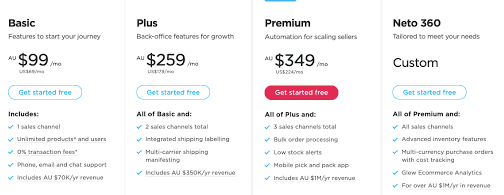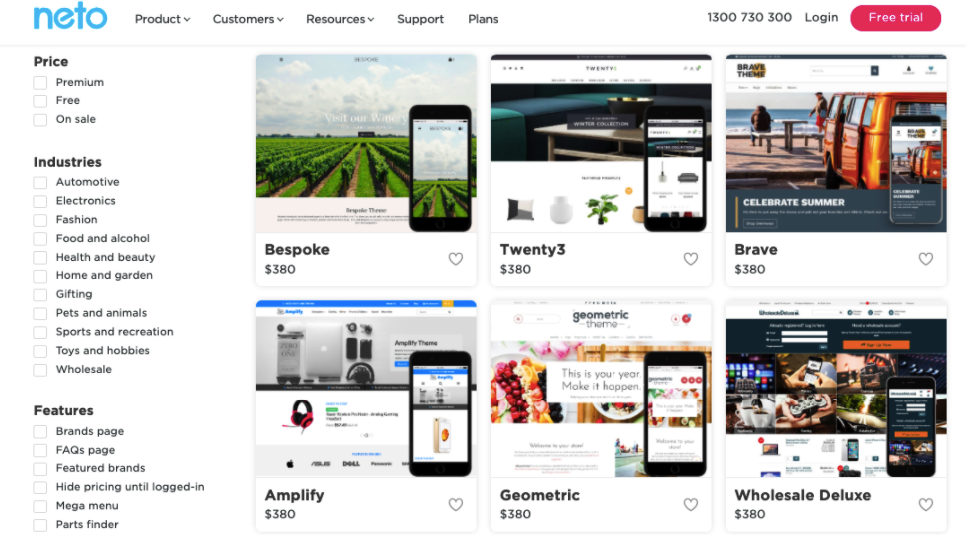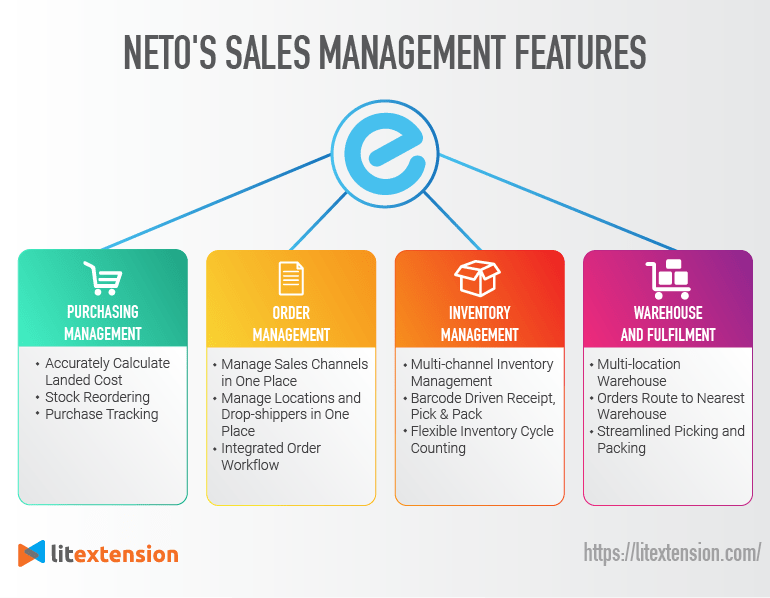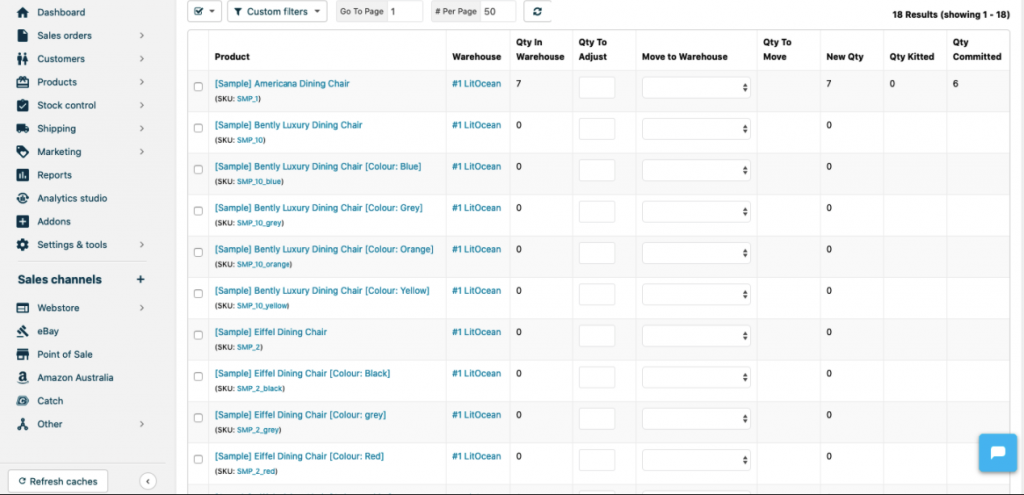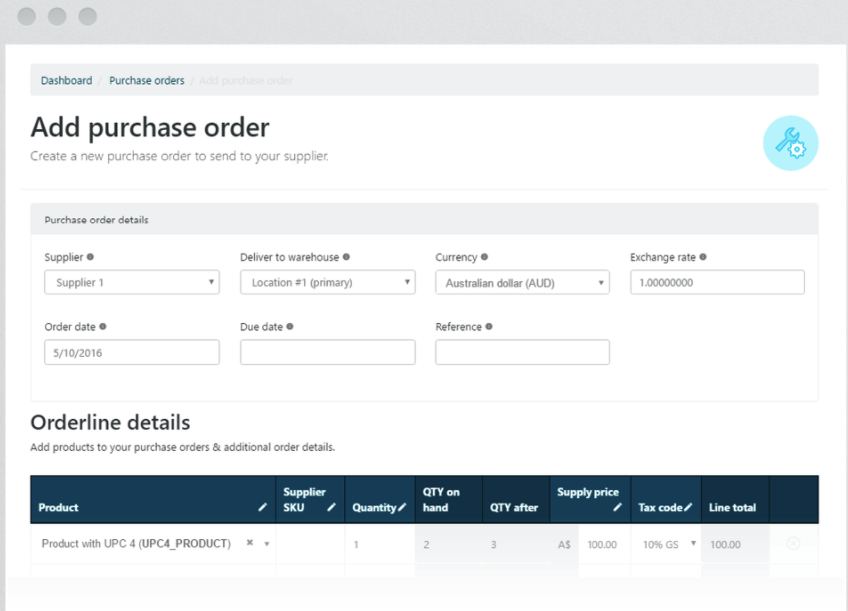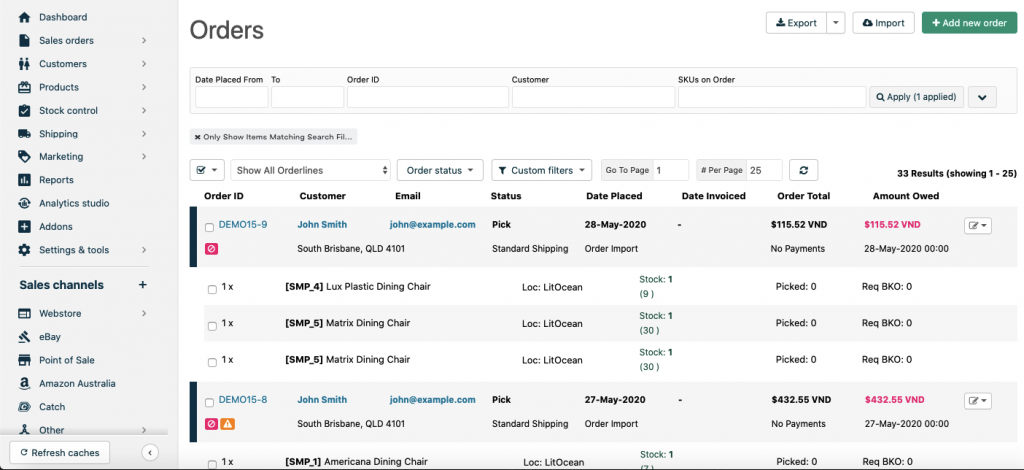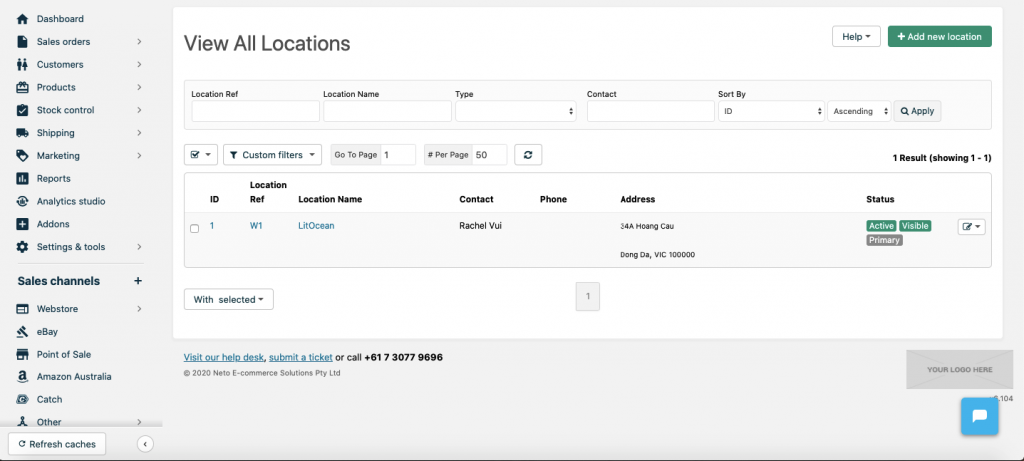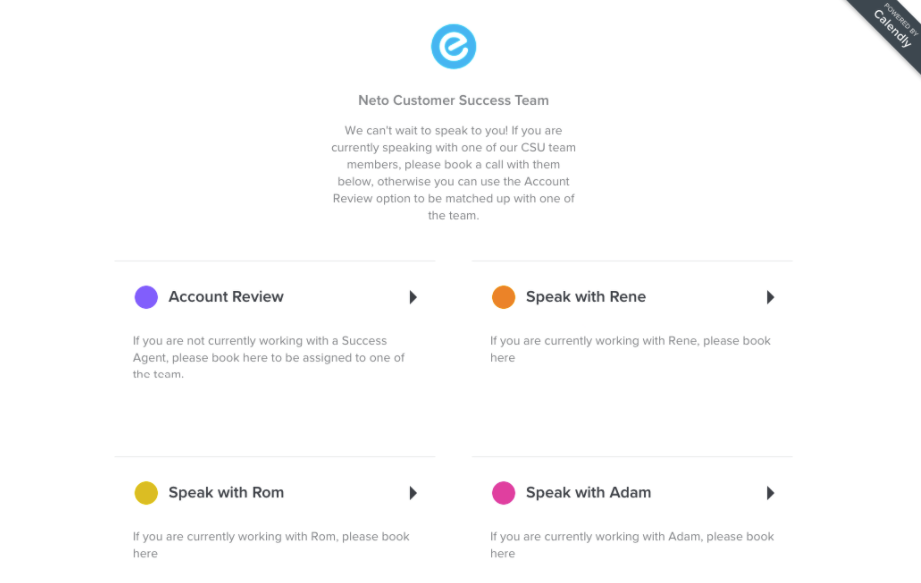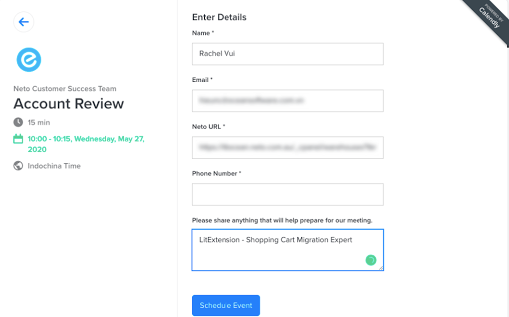In the era of booming internet usage, retailers are consolidating their stores and expanding to the online form to grow and develop. Choosing an e-commerce platform, hence, is vital to business growth as the platform needs to contain all the functionalities and features that can serve your business’ goal.
Of all the famous e-commerce platforms on the market, have you ever heard about Neto – a strong Australian spunky boy, growing up as a serious competitor nowadays? This article will show you:
- What is Neto?
- A detailed analysis of the eCommerce platform
- What should be considered when choosing Neto?
What is Neto?
Born in Australia and made for Australian retailers, Neto is a cloud-based platform and a complete multi-channel e-commerce solution. With excellent inventory management, customer management, and reporting, this platform allows merchants to sell more effectively.
It covers all the basics of a shopping cart so that startup merchants can easily go live and make profits.
It has become a favorable e-commerce platform among Australian as well as international retailers with over 5 thousand websites powered by Neto. Customers are generally satisfied with Neto’s performance, which is proved by a rate of 4.2 out of 5 points on Capterra.
Keep following this article to have a deeper analysis of the most prominent features of this platform.
Neto Review: Key Features
-
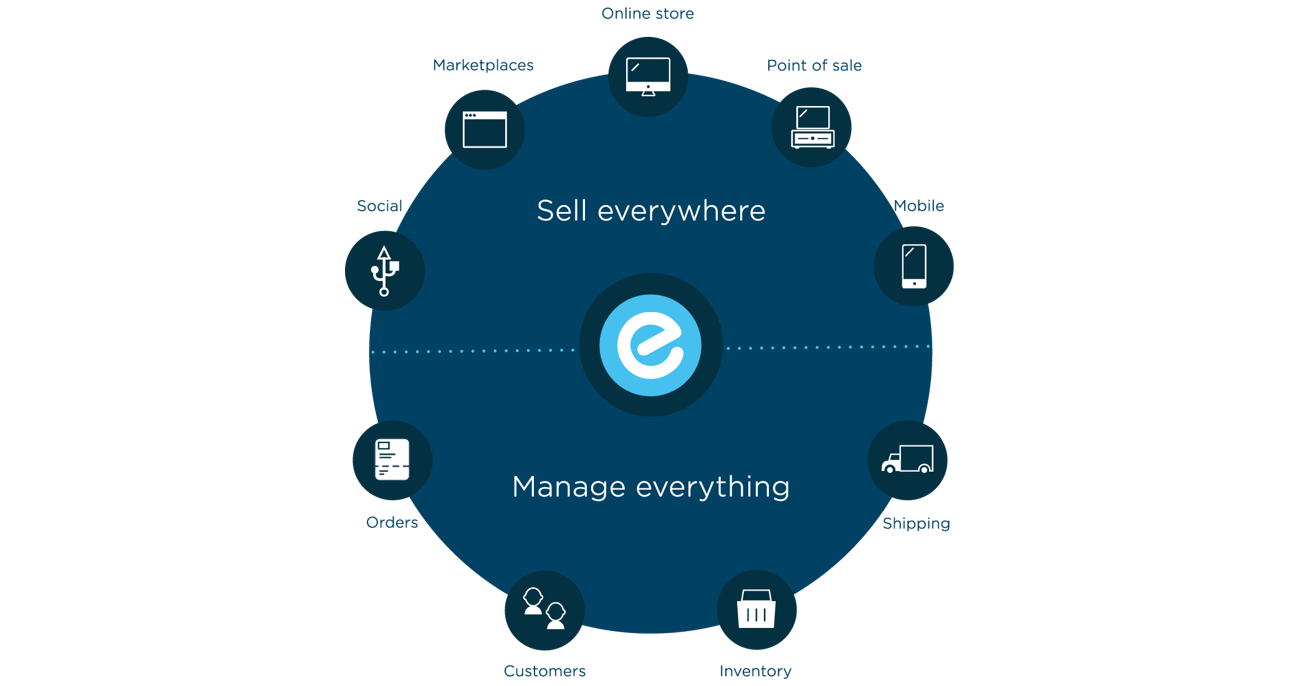
Neto – the only Australian retail and wholesale management platform
1. Cost
Neto offers a 14-day free trial without any contract or credit card required.
You can choose to pay monthly or annually for each plan. The monthly plans are separated into 3 individual tiers which provide you with the list of sale channels to choose such as eBay, Amazon, Catch, and so on. If you are not pleased with the minimum number of default selling channels allowed, you can consider paying extra to sell on more channels (AU$69/mo).
- Basic Plan (109 AUD ~ 79 USD) – This plan will help you set the first foundation for your online store, with unlimited number of products and a 0% transaction fee. When you want to take a long ride with this plan, you can choose to pay annually which costs 99 AUD per month, (~69 USD). The only limit when choosing this plan is that you can only choose one sales channel based on listed sale channels provided by Neto.
- Plus Plan (289 AUD ~ 199 USD) – This plan will be a stepping stone for your store’s development in the future. You can select 2 sales channels from the list and features that support smooth delivery. You will get 30 AUD off if you decide to pay annually, which costs you only 259 AUD per month (~179 USD).
- Premium Plan (389 AUD ~ 249 USD) – This is the most appropriate plan for you if you have been in the retail market for a long time. With a total of 3 sales channels and the low stock alerts and bulk order process features, all activities in your store will work professionally more than ever. For the annual payment, it is just 349 AUD per month, which is equivalent to 224 USD.
If you wish to have more advanced features that ultimately support your website, you can choose the Neto 360 Plan – a custom plan to facilitate growth and provide endless flexibility.
For more detailed comparison among each plan, click here.
To give you more details about Neto’s pricing, let’s have a quick comparison with other hosted shopping carts. While merchants can start selling on Shopify with $29 (Basic Plan) and $29.95 (Standard Plan), they have to pay approximately $79 to go with Neto’s Basic Plan.
However, for businesses that are looking for growth, it is a different story. The Advanced Shopify Plan costs $299 USD per month while the Premium Neto Plan only costs $249. With less than $50 per month, this can make a huge difference. And when it comes to an annual payment, Neto still beats Shopify pricing.
If you are interested in a comprehensive comparison between Shopify vs Neto check out our article here.
2. Interface
Neto also offers a range of intuitive and eye-catching themes.
With 30+ free themes that are optimized for many different industries such as Fashion, Health & Beauty, Food, etc, start-up stores can easily start selling on this plaform.
If you are looking for unique themes that help your brand stand out in the most florid way, Neto provides you with premium themes at reasonable prices. The prices start at only 280 AUD (~180 USD).
Standing from an objective perspective, in comparison with the popular hosted-cart eCommerce platform such as Shopify or BigCommerce, there are less available store themes on Neto.
3. All-in-one Sales Management Tools
Managing product stocks and other inventory issues can be immensely difficult. However, there are so many tools in Neto that can ensure the best experience for you when keeping track of your sales, which I want to mention below.
-
Inventory Management
Inventory management is the process whereby the inventory is organized, processed, and managed. Good inventory management will prevent unwanted situations like delays and backorders, thereby keeping customers happy and satisfied.
Neto’s inventory management provides stock status across all locations and channels with three noteworthy elements.
- Multi-channel Inventory Management – Centralized inventory management throughout eCommerce platforms, marketplaces, and retail stores to offer outstanding customer service.
- Barcode driven receipt, pick & pack – Products at Neto support all common barcode types to improve accuracy and effectiveness.
- Flexible Inventory Cycle Counting – Streamlining your inventory checking and improving accuracy over the year with the ability to count parts of your stock at any time without having to count all.
For more additional capabilities on inventory management, click here.
For every business, inventory management is of great importance, because the better you manage your inventory, the quicker you push your products, then your cash flow will be more stable.
-
Purchasing Management
Purchasing Management is the feature that allows store owners to both maintain accurate real-time inventory levels across all sales channels and keep track of the cost to make the right and in-time reordering decision.
Additionally, Neto supports real-time currency conversion, enabling business owners to place purchase orders for international suppliers easily. Moreover, it can automatically send consolidated purchase orders to dropship suppliers by email or FTP.
This built-in tool comes with several advantages below:
- Accurately calculate your landed cost – Assign purchasing order expenditures such as freight into your cost of sales, you get a detailed accurate view of profitability per product.
- Stock Reordering – Set buying amounts, low inventory levels, and use clear stock prediction reports to make wise purchase decisions.
- Purchase Tracking – Monitor every movement of purchase with an automated barcode scanner.
Not only these highlighted features above, but it also provide more additional purchasing capabilities for business owners to give the best keep track of purchasing procedure.
-
Order Management
Sale Order Management guarantees that orders from all channels are handled in one place, at all times and in an automated manner.
- Manage sales channels in one place – With Neto, your website orders from sales channels such as POS, eBay, Amazon, Catch, and more will be handled from a single dashboard.
- Manage locations and drop-shippers in one place – Manage the orders from a single account in several warehouses or outlets.
- Integrated order workflow – Create purchase orders, stock receipts, sales orders, pick slips, invoices, shipping labels, return authorizations, and credit notes from one place.
For more additional capabilities, click here.
-
Warehouse and Fulfilment
When you convert your physical store to an online business, a myriad of features and elements should be taken into consideration. One of the highlighted aspects is warehouse operation as it plays a key role in the order fulfillment cycle.
Since your business grows, sales increase and new products are added, the more effective warehouse management system, the more profitable it could be gained in your business.
Managing warehouse operations demands a reliable team, efficient processes, and systems to keep fulfillment costs down while keeping the high profits.
Neto’s warehouse management system provides local merchants with mobile barcode scanning, period inventory tracking, and versatile validation options.
- Multi-location warehouse – Monitor inventory and control orders through various warehouses and retail outlets. Assign customer’s orders to locations to optimize the routes.
- Orders route to the nearest warehouse – Expedite delivery time and boost customer happiness by assigning sales orders to the closest warehouse.
- Streamlined picking and packing – You’ll be able to operate a paperless warehouse (no more pick slips!) using mobile devices with software that includes an inbuilt barcode scanner allowing your staff to efficiently scan and pack every order from anywhere in the warehouse.
Furthermore, Neto provides dozens of other additional capabilities to help business owners more conveniently to keep track of their warehouse.
4. Apps and adds-On
When it comes to apps and add-ons, Neto tends to fall short in this category. Neto features some of the best add-on options but the selection is poor. Below are the best apps available to integrate for different purposes and functions:
- Accounting: With the most Australian popular accounting software such as Xero, MYOB, etc, you can share and sync orders, inventory, customer, invoices, and sales data to automate your accounting.
- Analytics and optimization: Plugins such as Google Analytics, Findify, etc allows you to find out what’s driving sales or what’s burning money. Also, gather data about customer behaviors so that you can quantify and justify necessary changes.
- Marketing: You can integrate into MailChimp, Facebook, Instagram, etc and reach more customers.
- Customer Management: Salesforce, Microsoft Dynamics CRM and Zoho CRM are integrated with Neto to help merchants gain more control over customers and their behavior. These tools also help to segment your customer listings or connect to an external CRM.
For more add-ons, click here.
5. Payment Gateways
Neto supports lots of famous payment gateways that will make customers’ payment procedures become more convenient and also highly secure. You can expect to connect to payment methods like PayPal, Google Pay, Visa, Master Card, etc.
Also, with Neto, you can avail these features:
- Instant payment setup – Get to your first transaction smoother by allowing major credit cards and PayPal immediately with a single button, no merchant facilities needed.
- In-built fraud prevention – Take advantage of highly integrated fraud tools to counter fraud online like Maxmind and Stripe Radar.
6. Shipping options
With most popular international and domestic carriers such as Australian Post, TNT, Hunter Express, Allied Express, etc, you can rest assured that your product can be delivered to customers on time.
You can easily set up shipping options which comprise the shipping rates, zones, and categories to calculate the shipping cost of products from your warehouse to the customer.
One of the most features in Neto’s Shipping System is Shipping Labelling. This element of the system links your integrated carrier account to your control panel to produce shipping labels. If you are not using the carrier integration module, or are using a nonintegrated carrier, you can link your services to a generic label to print plain address labels.
7. Security
In particular, the Neto system and security have been validated and tested to achieve compliance with PCI DSS level 1. Payment Card Industry Data Security Standard (PCI DSS) is a set of security requirements intended to ensure that businesses that accept, process, store or transmit card details while maintaining a secure environment.
To protect customers’ information as well as remain PCI compliant, Neto runs internal and external vulnerabilities checks every 3 months (or earlier if needed) and penetration tests every 12 months. This guarantees that any adjustments to code or program are kept as secure as possible.
8. Customer Service
Unlike most popular platforms nowadays, Neto’s support team does not only assist you via email, phone or live chat, you can also book appointments with one of the supporters that you have worked with previously.
Or if you have not been working with Neto, you can still book an appointment with the Success Team. This will help you be more proactive in asking for help, avoiding wasting time waiting when sending mail, or using live chat.
While you’re building your website with Neto, you’re going to have full support from Neto’s Success Team, and they’re going to give you in-depth guidance and instructions to ensure that you don’t run into any issues.
Besides, Neto’s Success Team will provide a sub-launch analysis of your account, guaranteeing you get the best out of your subscription and searching for any areas that can boost your business objectives.
Conclusion
To sum up, Neto is a powerful e-commerce platform for scaling B2B and B2C Brands. With main features focusing mainly on management systems, Neto integrates with numerous sales channels such as eBay, Amazon. If you are an Australian retailer who simply wants to access the Australia market, there is no other choice better than Neto.
With Neto, you don’t need to waste precious time trying to code functionality from the ground up as doing with open-source platforms. Once you have started with Neto, you can dive into the advanced features like accounting integration, marketing campaigns, and advanced shipping integration.
We hope that after reading this Neto review, you have gained enough information about Neto and its outstanding features.
When you’re ready to migrate to Neto or to another platform, we’d love to help. Currently, LitExtension has been supporting migration from more than 90 shopping carts to Neto accurately and safely in 3 simple steps.
According to our recent data report, store owners mostly migrate their store from:
Feel free to reach out to us! We are here to deliver the best migration experience for you. Thanks for reading and see you again! You can also join our Facebook Community to get more eCommerce tips and news.
